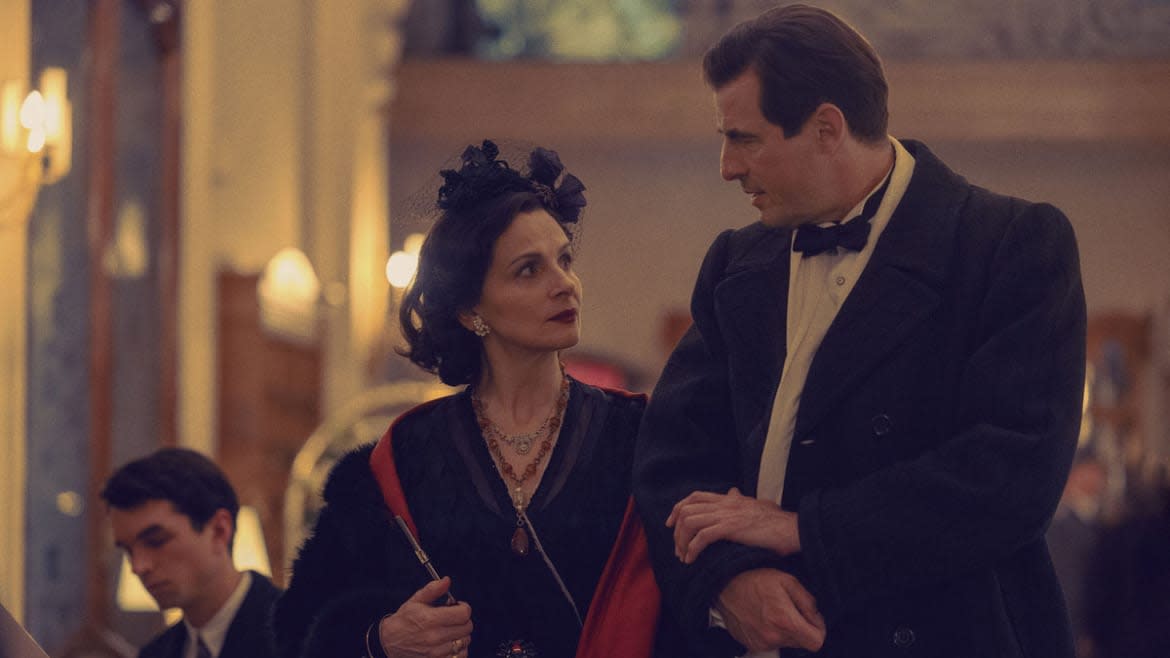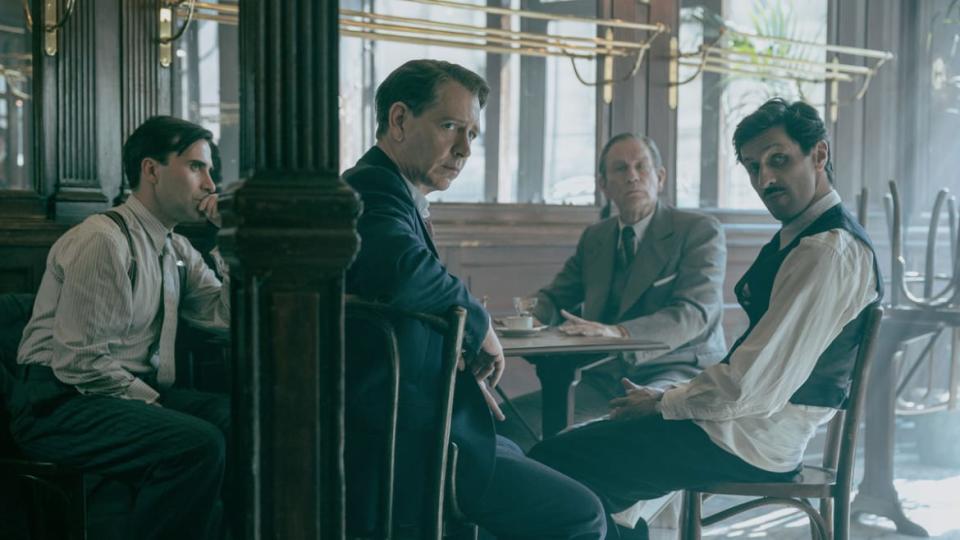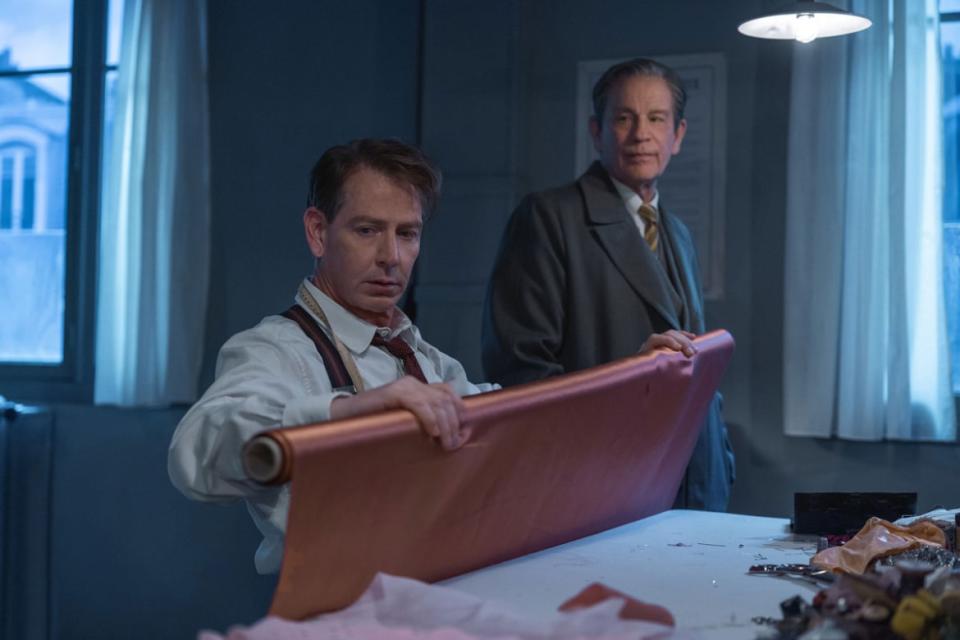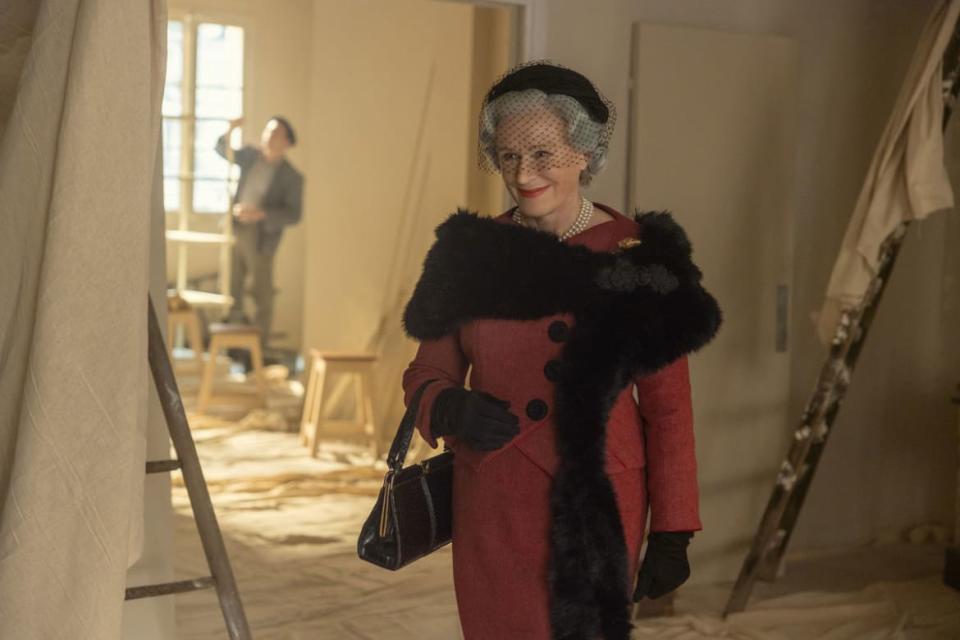‘The New Look’ Commits a Major Fashion Faux Pas

The phrase “style over substance” has become a pejorative, referring to something that prioritizes the way it looks and feels over the message it’s trying to convey. But it shouldn’t hold such a negative connotation—the truth is that some of the best films and television shows rank technique first and foremost, and allow the narrative to take a backseat to let the atmosphere do the talking.
The New Look, the latest series from Apple TV+ (streaming Feb. 14), is not one of those shows.
Named for the moniker given to Christian Dior’s revolutionary Spring/Summer 1947 couture collection—the show is certainly stylish, with its gorgeous costumes and elegant direction accurately setting the scene in pre-and-post-war Paris. But when it comes to any kind of substantive significance, the series is as stiff as a boned corset. Episodes drag past with a languid pace, rarely asserting their importance beyond the scant thrills that come from watching capital-A actors do their jobs. And though it’s appropriately chic, the series makes glaring blunders when stitching together its final form. The New Look is a fascinating exercise in squandered promise, missing all of the glamor and fine-tailoring that its concept demands.

Opening in 1955 and slowly working its way backward to tell Dior’s story, The New Look proposes a novel question: What if someone whose name is synonymous with sophistication had a deeply ugly side? That’s the phenomenon that the series is unafraid to bore into, exploring the dissonance between public perception and actual history among Dior (Ben Mendelsohn) and his contemporaries, notably Coco Chanel (Juliette Binoche). Chanel is remembered as the woman who made French fashion the worldwide standard, someone whose eye for design preceded them. Hell, she was cited as the favorite designer of no less than 10 Long Island commuter students in my Intro to Fashion Merchandising class in 2013, something I found funny at the time, given that no one seemed critical—or perhaps even aware—of Chanel’s Nazi alliances during World War II.
By that estimation, there is a clear need to tell this story on an educational basis alone, even 80 years on. But The New Look’s approach to its subjects’ motivations, desires, and careers is all frustratingly surface-level for such a consequential story. The series struggles to find the balance between gossipy high-fashion drama and war tale, if there is even a sizable middle point to be established between those two stark opposites at all.
During his 1955 talk at the Sorbonne, France’s premier academic institution, Dior is asked by a student whether it’s true that Chanel closed her atelier during the Nazi occupation of Paris, while Dior kept working. The moderator balks at the question, but Dior insists on answering, refusing to deny what the student is alleging. “There is the truth,” he says, “but there is always another truth that lives behind it.” This opening, cut against a sequence of Chanel rambling to reporters and disparaging Dior’s success, sets a contentious tone for the series that its following episodes never match. The thinly veiled animosity between the two designers doesn’t reach the quarrelsome heights that this prologue promises, instead choosing to spend its first half drudging through familiar scenes of war-torn streets and Nazi violence.

The front half of The New Look starts off already burdened by these storylines, which amount to little more than plainly saying that steadfast morality is a luxury in the face of brutality. Dior, who was designing under Lucien Lelong (John Malkovich) at the time, did not have the privilege of being able to stop working. He and his sister Catherine (Maisie Peters) had to stay afloat to survive Nazi occupation. As both a member of the French Resistance and a woman, Catherine’s options were limited, and Dior faced an impossible choice: compromise his values to design for Nazi wives and girlfriends, or refuse the work and risk insolvency during a war with no end in sight.
Chanel’s choices, however, floated less in this moral gray area. She may have closed her atelier, but her Jewish business partners were as responsible for the shutdown as she was. The series allows us to be privy to Chanel’s dissatisfaction with the way her business and life are being run, and how she tried to alter that irritation by using Nazi officers to regain status and comfort. Chanel takes appointments and dinners with the SS, and falls into a relationship with high-ranking Nazi attaché Hans Von Dincklage (Claes Bang). Chanel is soon roped into doing Hans’ dirty work, beginning a dismal pattern of behavior that she’d have to refute long after the war was over.
The series picks up the pace in the second half of its first season. By then, the war is over, and the show’s writers can stop pretending that they have anything new or interesting to mine from their depictions of Nazi cruelty. When characters like the ultra-posh Harper’s Bazaar editor Carmel Snow (Glenn Close) and Chanel’s prickly friend and socialite Elsa Lombardi (Emily Mortimer) arrive, The New Look finally understands how to pad its narrative with a little more intrigue. But by then, it’s already too late. The show has already lost its focus and run itself in circles too many times to count. It’s dreadfully boring in a way that haute couture has, by nature, never been.

But more confounding than how the writers have managed to make Dior’s story so painfully slow is how its directors, producers, and editors have allowed this stylish tale to be hampered by its inclusion of AI-generated images and horrific digital upscaling. For a show that doesn’t cut corners when with its all-star casting and costuming—not to mention its Jack Antonoff-produced soundtrack filled with music industry heavy-hitters—these inclusions are positively baffling. The AI rendering of a woman’s face in the opening credits would be galling and completely noticeable as it is. But when the fourth episode doubles down on this by including a scene of AI-generated vintage newsreels and upscaled archival footage, it almost feels disrespectful. Just how foolish and uncritical does the team working behind the scenes think audiences are?
If the performances at the heart of The New Look were any good, it might be easier to shrug off some of these faults. But Binoche’s Coco Chanel is a rare miss from one of the great French performers. She is, at times, clownish and comically over-the-top. Binoche’s performance lacks the refinement that the designer used to her advantage to pull the wool of her Nazi associations over people’s eyes. Mendelsohn is blessedly understated opposite her, but even his solid, quietly moving performance feels dragged into the doldrums of tedium by the series’ glacial pace.
How Cindy Crawford, Naomi Campbell, and Linda Evangelista Became ‘The Super Models’
The New Look aims to explore good and evil through the lens of fashion. It’s a unique idea, but the show is unsure of what to say about how humans traverse the gray area between light and dark. It’s true: Sins aren’t automatically forgiven simply because the offender existed in the murky space between two moral polarities. But the series can’t decide whether it wants to be an indictment of Chanel, a celebration of Dior, or one big, posturing history lesson. Spending so long jumping between those three things instead of sewing them all together is The New Look’s biggest flaw. And couture does not have flaws.
Get the Daily Beast's biggest scoops and scandals delivered right to your inbox. Sign up now.
Stay informed and gain unlimited access to the Daily Beast's unmatched reporting. Subscribe now.


